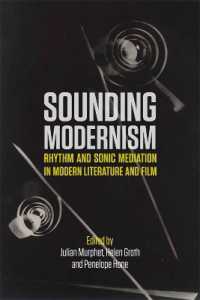Full Description
This book sheds light on the production of Israeli space and the politics of Jewish and Arab cities. The authors' postcolonial approach deals with the notion of periphery and peripherality, covering issues of spatial protest, urban policy and urban planning.
Discussing periphery as a political, social and spatial phenomenon and both a product and a process manufactured by power mechanisms, the authors show how the state, the regime of citizenship, the capitalist logic, and the logic of ethnonationalism have all resulted in ethno-class division and stratification, which have been shaped by spatial policy. Rather than using the term periphery to describe an economic, geographical and social situation in which disadvantaged communities are located, this critical examination addresses the traditionally passive dimension of this term suggest that the reality of peripheral communities and spaces is rather more conflicted and controversial.
The multidisciplinary approach taken by this book means it will be a valuable contribution to the fields of planning theory, political science and public policy, urban sociology, critical geography and Middle East studies.
Contents
Introduction 1. Nationalism, Identity and the Production of a Periphery 2. Periphery, Architecture and Diasporic Sense of Place 3. Frontier in the Core: Russian Migrants in a Jewish-Arab 'Mixed City' 4. Labour Migration and the Urban Geographies of the Periphery 5. The Production of Global\Peripheral Agricultural Landscape 6. Revisiting Multiculturalism in the City 7. Recognition, Land Allocation and the Periphery. Conclusions: In-between Periphery and Frontier








